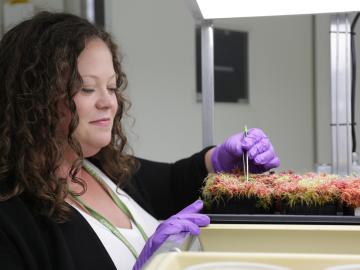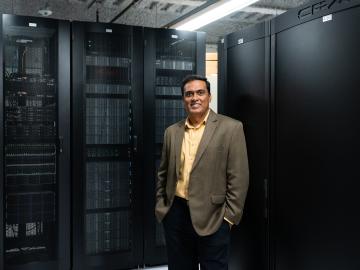
Filter News
Area of Research
- (-) Biology and Environment (60)
- (-) Materials (20)
- (-) Supercomputing (47)
- Biological Systems (1)
- Biology and Soft Matter (1)
- Computational Biology (1)
- Energy Science (18)
- Fusion and Fission (18)
- Fusion Energy (4)
- Isotopes (7)
- Materials for Computing (4)
- National Security (16)
- Neutron Science (14)
- Nuclear Science and Technology (16)
- Quantum information Science (1)
News Type
News Topics
- (-) Advanced Reactors (1)
- (-) Artificial Intelligence (24)
- (-) Big Data (20)
- (-) Biology (44)
- (-) Biomedical (16)
- (-) Nanotechnology (11)
- (-) Nuclear Energy (11)
- (-) Space Exploration (2)
- 3-D Printing/Advanced Manufacturing (5)
- Bioenergy (29)
- Biotechnology (8)
- Buildings (3)
- Chemical Sciences (11)
- Clean Water (10)
- Composites (3)
- Computer Science (53)
- Coronavirus (10)
- Cybersecurity (2)
- Energy Storage (8)
- Environment (70)
- Exascale Computing (18)
- Frontier (17)
- Fusion (2)
- Grid (3)
- High-Performance Computing (32)
- Hydropower (5)
- Isotopes (7)
- Machine Learning (10)
- Materials (22)
- Materials Science (22)
- Mathematics (4)
- Mercury (6)
- Microscopy (13)
- National Security (4)
- Neutron Science (14)
- Partnerships (4)
- Physics (14)
- Polymers (5)
- Quantum Computing (12)
- Quantum Science (11)
- Security (3)
- Simulation (17)
- Software (1)
- Summit (24)
- Transportation (7)
Media Contacts

Chemical and environmental engineer Samarthya Bhagia is focused on achieving carbon neutrality and a circular economy by designing new plant-based materials for a range of applications from energy storage devices and sensors to environmentally friendly bioplastics.

Science has taken Melanie Mayes from Tennessee to the tropics, studying some of the most important ecosystems in the world.

As the United States moves toward more sustainable and renewable sources of energy, hydropower is expected to play a pivotal role in integrating more intermittent renewables like wind and solar to the electricity grid

Microorganisms may provide hope that peatlands can withstand hotter temperatures in a changing climate.

The Atmospheric Radiation Measurement Data Center is shepherding changes to its operations to make the treasure trove of data more easily available accessible and useful to scientists studying Earth’s climate.

Scientists develop environmental justice lens to identify neighborhoods vulnerable to climate change
A new capability to identify urban neighborhoods, down to the block and building level, that are most vulnerable to climate change could help ensure that mitigation and resilience programs reach the people who need them the most.

Jennifer Morrell-Falvey’s interest in visualizing the science behind natural processes was what drew her to ORNL in what she expected to be a short stint some 18 years ago.

A team of researchers has developed a novel, machine learning–based technique to explore and identify relationships among medical concepts using electronic health record data across multiple healthcare providers.

A study led by researchers at ORNL could help make materials design as customizable as point-and-click.

Tackling the climate crisis and achieving an equitable clean energy future are among the biggest challenges of our time.


